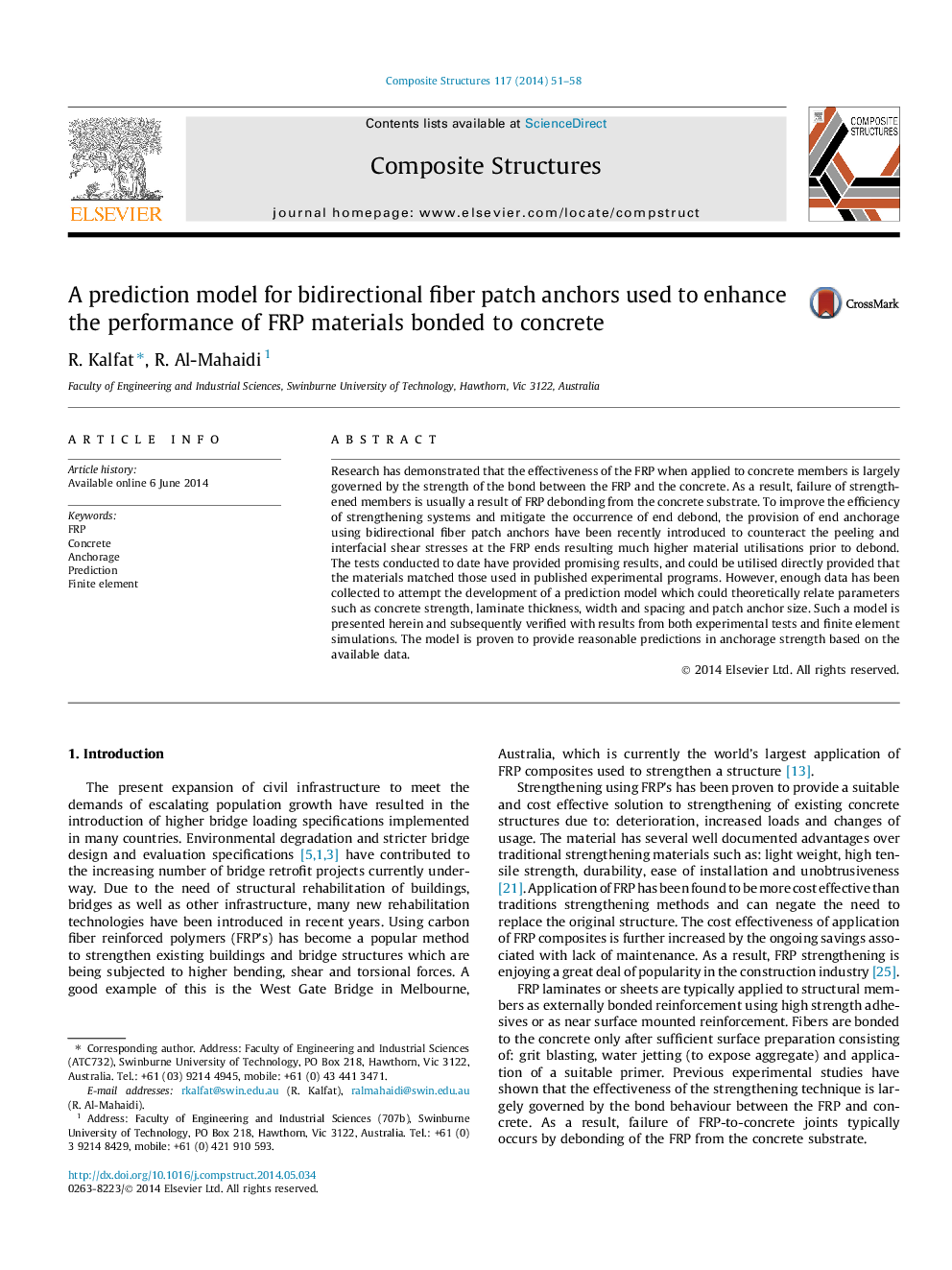| Article ID | Journal | Published Year | Pages | File Type |
|---|---|---|---|---|
| 251527 | Composite Structures | 2014 | 8 Pages |
Research has demonstrated that the effectiveness of the FRP when applied to concrete members is largely governed by the strength of the bond between the FRP and the concrete. As a result, failure of strengthened members is usually a result of FRP debonding from the concrete substrate. To improve the efficiency of strengthening systems and mitigate the occurrence of end debond, the provision of end anchorage using bidirectional fiber patch anchors have been recently introduced to counteract the peeling and interfacial shear stresses at the FRP ends resulting much higher material utilisations prior to debond. The tests conducted to date have provided promising results, and could be utilised directly provided that the materials matched those used in published experimental programs. However, enough data has been collected to attempt the development of a prediction model which could theoretically relate parameters such as concrete strength, laminate thickness, width and spacing and patch anchor size. Such a model is presented herein and subsequently verified with results from both experimental tests and finite element simulations. The model is proven to provide reasonable predictions in anchorage strength based on the available data.
